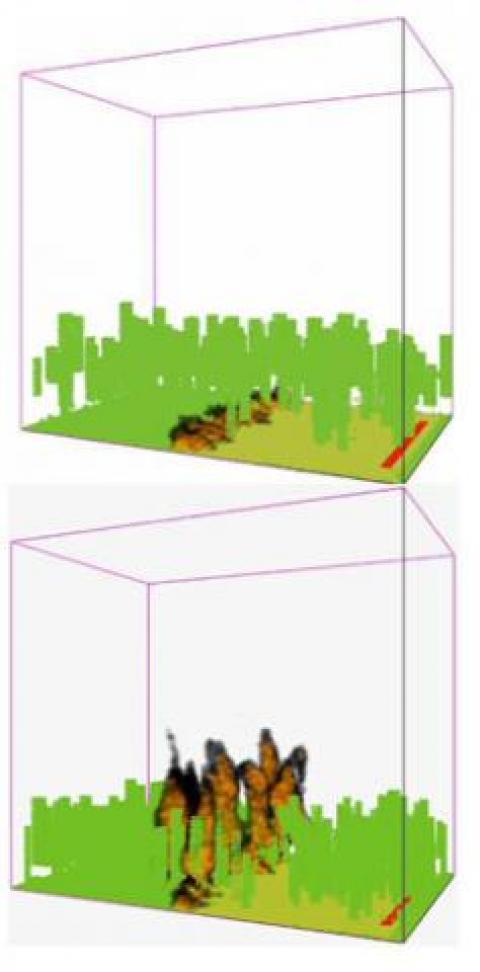Increasingly intense fire seasons, rapidly changing ecosystems, and an expanding wildland-urban interface all increase the hazard that fires pose to communities, watersheds, and ecosystems. Fuel treatments offer managers an opportunity to proactively mitigate threats to firefighters and communities as well as to maintain or restore healthy ecosystems, typically by altering forest canopies before a wildfire incident occurs. Unfortunately, fire that spreads through forest canopies is very complex, and many aspects of such fire behavior are still poorly understood. Therefore, it is difficult to identify the most hazardous stands, and managers cannot be certain that treating a stand will reduce fire hazard. FFS Research Ecologists Russ Parsons and Matt Jolly, along with Rocky Mountain Research Station (RMRS) scientist Carolyn Sieg, FFS Forester Greg Cohn, RMRS Operations Research Analyst Nick Crookston, and Pacific Northwest Research Station Scientist William Mell, are partnering with researchers at Oregon State, Colorado State, Los Alamos National Lab, and the French National Institute of Agricultural Research in a project to explore what makes fuel treatments effective. The project (STANDFIRE) is designed to discover what makes fuel treatments effective. STANDFIRE is a platform through which new fire science can be tested, assessed, and incorporated into fuel treatment analysis.
STANDFIRE has three goals:
- to improve our understanding of how fire spreads through forest canopies,
- to think critically about how to measure the success of a fuel treatment, and
- to develop and test new approaches for predicting the impact of a fuel treatment.
Most of the time, it is too difficult and dangerous to test how fires burn through forest canopies in real forests, so computer models play a key role in helping us understand this critically important phenomenon. In this project, we are working with new physics-based fire behavior models (HIGRAD-FIRETEC and WFDS), which allow us to simulate fire spreading through three dimensional forests to test how different aspects of fuel, such as spacing between trees, can change how fire spreads. We are experimenting with different ways of representing fuels, and examining the potential impact of other fuel properties, such as fuel chemistry, on fire behavior.
How do we know if a treatment will be successful? The answer depends on many factors, but an important one is how we measure “success.” To learn more about how different people describe a successful fuel treatment, we organized a workshop in 2014, gathering an international group of researchers and managers to develop clear, measurable, and adaptable benchmarks for fuel treatment success. The workshop revealed the importance of defining measures of success during the planning process and testing multiple potential treatments against those measures. With the ideas generated by this engaged group of researchers, analysts, and managers, we have begun to develop and test new stand scale metrics that can be used by managers to both define fuel treatment goals and evaluate how well a fuel treatment has achieved those goals.
We have taken the knowledge of fire behavior, fuel dynamics, and management needs gained in our research to develop a new software platform that can help predict fuel treatment impacts, through detailed simulations at the scale of individual forested stands. We have paired the physics-based fire behavior models with an existing nationwide forest harvest and growth model (the Forest Vegetation Simulator) to look at the impact of different fuel treatment methods and examine how that impact changes over time.
Image: Example three-dimensional fire simulations for a forest stand, before (bottom) and after treatment (top), carried out with STANDFIRE, a platform for fire science development and analysis
